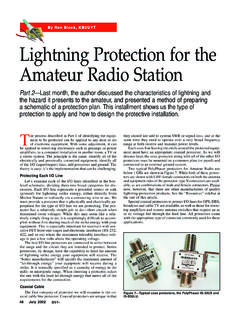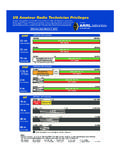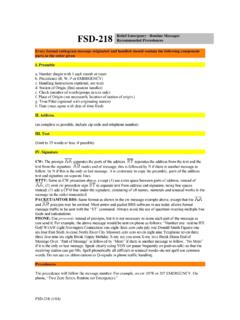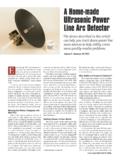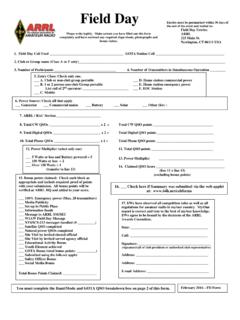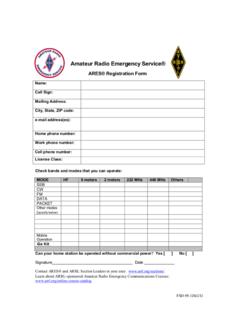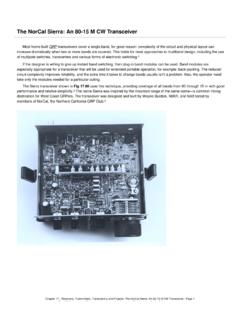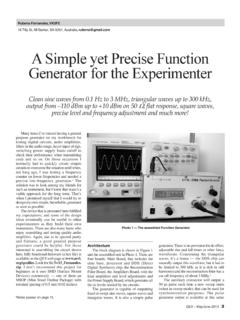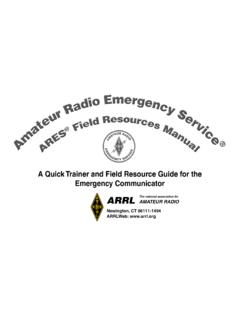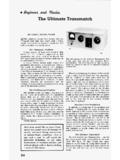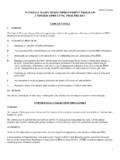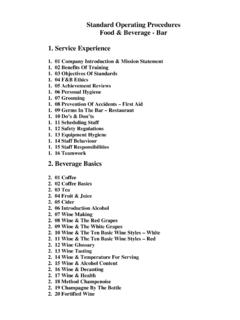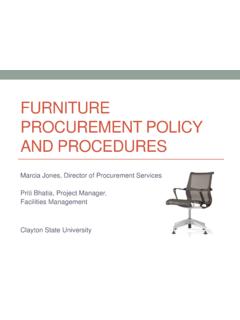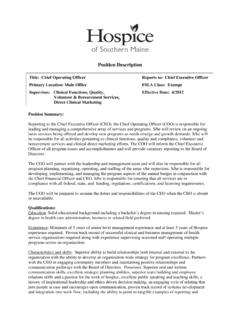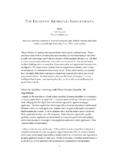Transcription of ETHICS AND OPERATING PROCEDURES FOR THE …
1 ETHICS and OPERATING PROCEDURES for the Radio Amateur 1 EETTHHIICCSS AANNDD OOPPEERRAATTIINNGG PPRROOCCEEDDUURREESS FFOORR TTHHEE RRAADDIIOO AAMMAATTEEUURR Edition 3 (June 2010) By John Devoldere, ON4UN and Mark Demeuleneere, ON4WW Proof reading and corrections by Bob Whelan, G3 PJT ETHICS and OPERATING PROCEDURES for the Radio Amateur 2 PowerPoint version: A PowerPoint presentation version of this document is also available. Both documents can be downloaded in various languages from: The PDF document is available in more than 25 languages. Translations: If you are willing to help us with translating into another language, please contact one of the authors (on4un(at) or on4ww(at) ).
2 Someone else may already be working on a translation. Copyright: Unless specified otherwise, the information contained in this document is created and authored by John Devoldere ON4UN and Mark Demeuleneere ON4WW (the authors ) and as such, is the property of the authors and protected by copyright law. Unless specified otherwise, permission is granted to view, copy, print and distribute the content of this information subject to the following conditions: 1. it is used for informational, non-commercial purposes only; 2. any copy or portion must include a copyright notice ( John Devoldere ON4UN and Mark Demeuleneere ON4WW); 3. no modifications or alterations are made to the information without the written consent of the authors. Permission to use this information for purposes other than those described above, or to use the information in any other way, must be requested in writing to either one of the authors.
3 ETHICS and OPERATING PROCEDURES for the Radio Amateur 3 TABLE OF CONTENT Click on the page number to go to that page The Radio Amateur's Code .. 5 I. 5 5 I. 2. AMATEUR RADIO CODE OF 6 I. Basic 6 The danger of 6 How to avoid 7 The moral 7 The code of 7 This 7 II. GENERAL OPERATING .. 8 HAM 8 9 USE YOUR CALLSIGN 9 ALWAYS BE A 9 ON THE 10 HOW DO YOU MAKE A QSO?.. 10 WHAT DO YOU TALK ABOUT ON THE AMATEUR BANDS?.. 11 MAKING CONTACTS ON 11 How do you call CQ?.. 11 What does CQ DX mean?.. 13 Calling a specific 13 How do you make a QSO in phone?.. 13 Fast back and forth 15 How to make QSOs in a phone 16 The correct use of QRZ .. 18 Check your transmission 19 THE ART OF TELEGRAPHY (CW, MORSE CODE).
4 19 The computer as your 20 Calling 21 22 Calling CQ DX .. 22 Calling a specific station (a directive call).. 22 Carry on and wrap up the CW 23 Using BK .. 25 Still 26 Using the prosign AS (DIT DAH DIT DIT DIT).. 26 Using KN .. 26 How to answer a 26 Someone sends an error in your 26 Call a station that s finishing a 27 Using the = sign or DAH DIT DIT DIT DAH .. 27 Send good sounding 27 I am a QRP station (= low power station).. 28 The correct use of QRZ? .. 28 The use of ? instead of QRL? .. 29 Sending DIT DIT at the end of a 29 ETHICS and OPERATING PROCEDURES for the Radio Amateur 4 Correcting a sending 29 CW 29 Abbreviated numbers (cut numbers) used in 31 Zero 31 Where can one find slow speed CW stations (QRS)?
5 32 Do I have key clicks?.. 32 Too fast?.. 33 CW training 33 Most used CW 33 OTHER 35 RTTY (Radioteletype).. 36 PSK 31 (Phase Shift Keying).. 39 SLOW SCAN TV (SSTV).. 42 III. ADVANCED 44 44 Simplex 44 Split (frequency) 45 How to behave in a pileup?.. 45 Simplex pileup in 45 Simplex pileup in 47 Split frequency pileup in 48 Split (frequency) pileup in 49 TAIL 49 50 DX 51 THE USE OF PARTIAL 52 DX 53 Main 53 Who do you spot?.. 53 Which information is available, how to retrieve 54 A spot appears: a new country for you. What now?.. 54 Things not to do on a DX 54 DX 56 DX windows on the HF 56 On 57 SPECIFIC OPERATIONAL PROCEDURES FOR VHF AND 57 CONFLICT 58 COPS (FREQUENCY POLICE).. 58 Types of cops .. 58 What makes the cops appear?
6 59 The good sinners .. 59 .. and the bad 59 Do you really want to be another cop?.. 59 How to behave in the middle of a cop parade?.. 60 TIPS FOR DX STATIONS AND DXPEDITION 60 Attachment 1: International Spelling and Phonetic 65 THE AUTHORS:.. 67 The use of Commas and Full Stops: in this manual fractional parts are separated by a comma. Example: 3,51 MHz = kHz, = one million. ETHICS and OPERATING PROCEDURES for the Radio Amateur 5 The Radio Amateur's Code The Radio Amateur is He never knowingly operates in such a way as to lessen the pleasure of others. He offers loyalty, encouragement and support to other amateurs, local clubs, the IARU Radio Society in his country, through which Amateur Radio in his country is represented nationally and internationally.
7 He keeps his station up to date. It is well-built and efficient. His OPERATING practice is above reproach. He operates slowly and patiently when requested; offers friendly advice and counsel to the beginner; kind assistance, cooperation and consideration for the interests of others. These are the marks of the amateur spirit. Radio is a hobby, never interfering with duties owed to family, job, school or community. His station and skills are always ready for service to country and community. -- adapted from the original Amateur's Code, written by Paul M. Segal, W9 EEA, in 1928. I. INTRODUCTION WELCOME Most radio amateurs or aspiring radio amateurs reading this manual are probably new to amateur radio. Up until recently, newcomers were thrown on the bands with very little, if any, help, without clear instructions or teaching on how to behave on the air.
8 Can you imagine being released on the roads, in heavy traffic, without anyone having told you how to drive a car or how to behave on the road? This idea by itself seems frightening to most of us. Appearing on the ham bands without being prepared for this wonderful experience could be equally intimidating, to say the least. Don t panic though, everybody some day drove a car for the first time, and every ham was a new ham at first. Welcome to the world of ham radio, welcome to our bands. This document will help you to better enjoy this wonderful hobby, right from the start. Don t forget, ham radio is a hobby, and a hobby by definition is something you enjoy! The reader should not let himself be deterred by the many rules in this manual, thinking that these would lessen the pleasure and satisfaction of making radio ETHICS and OPERATING PROCEDURES for the Radio Amateur 6 contacts.
9 These rules are easy to understand and will rapidly become an automatic code of conduct for every ham of good will. This manual is divided in three parts: I. Introduction Why this manual? II. General OPERATING This section applies to all radio amateurs, whatever kind of OPERATING they do (rag chewing, DX chasing, contesting etc.). III. Advanced OPERATING This section covers subjects mainly linked to DXing: making QSOs in pile-ups, using the DX Cluster, DX nets, being the DX operator in a rare country, conflict situations etc. I. 2. AMATEUR RADIO CODE OF CONDUCT I. Basic principles Basic principles that should govern our code of conduct on the ham bands are: Social feeling, feeling of brotherhood, brotherly spirit: large numbers of us are all playing radio on the same airwaves (our playing field).
10 We are never alone. All other hams are our colleagues, our brothers and sisters, our friends. Act accordingly. Always be considerate. Tolerance: not all hams necessarily share your opinions, and your opinions may also not be the best ones. Understand there are other people with different opinions on a given subject. Be tolerant. This world is not for you exclusively. Politeness: never use rude language or abusive words on the bands. Such behaviour says nothing about the person it is addressed to, but a lot about the person behaving that way. Keep yourself under control at all times. Comprehension: please understand that not everyone is as smart, as professional or as much an expert as you. If you want to do something about it, act positively (how can I help, how can I correct, how can I teach) rather than negatively (cursing, insulting etc.)
